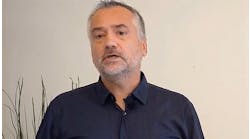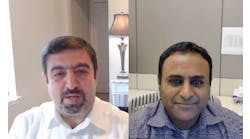“You have to look at the overall project plan, then think of enabling technologies that fit into that plan.” Schneider Electric’s Elias Panasuik stresses the need for data analytics initiatives to be developed in line with an organization’s predetermined goals.
Analytics (and all of the related tools, techniques and technologies) have been buzzwords in the industrial space for decades. And “doing analytics” is often considered a destination—a panacea for whatever problems plague your plant.
But in order to properly unlock the full power of industrial analytics and usher in maximum process performance improvements, we must change our mindsets to consider analytics not a destination but rather an enabling factor on a journey toward working, well, better.
That was the key message in the analytics-focused Innovation Talk delivered by Elias Panasuik, EcoStruxure Power and Process execution director, Schneider Electric.
“Analytics should be about unlocking new ways of working,” he explained, before posing questions that business leaders and their solution-provider partners should ask themselves at the beginning of any digitalization project. What are we actually enabling? Where do our goals come together? How do I build a business case for this? What other values will be created out of this project?
A lack of clearly focused project goals is not uncommon when it comes to capital projects. And current conditions are complicating matters—remote-work needs prompted by COVID, retiring workforces taking institutional knowledge with them, and young professionals filling in those vacancies with a greater need for guidance than their predecessors. All of these are accelerating the digitalization of projects.
Solutions to these challenges, believes Panasuik, are centered around finding focus with data analytics. Merely launching an analytics campaign is not enough. End users and their vendor partners must first consider the timing of the project and be prepared for their future state once the project is underway. They must consider how any project will change how employees perform their work and how the success of that work will be measured. They must weigh risks versus opportunity with any new approach and, ideally, develop a clear roadmap for those risk variables.
“You have to look at the overall project plan, then think of enabling technologies that fit into that plan,” he explained. Then comes the analytics part—combining power and process information to deliver the intelligence needed to make the right choices.
Again…it’s a journey.
Panasuik ended his presentation with a look at two case studies that exemplify his message.
The first is a Schneider Electric project with BASF, in which the client wanted to evolve from reactive to predictive maintenance without costly interruptions to work processes. The analytics component of the project came at the end, well after a risk assessment determined what tools were needed for the campaign, what KPIs were desired by the client and, in a broader sense, what success would look like once changes were made. After those elements were clarified, the Schneider Electric team determined the specific analytics insights that would enable those wins.
The second case study featured Air Liquide’s desire to boost internal communication and speed its reactions to problems. Panasuik detailed a similar journey of defining specific goals about visibility and maintenance before assigning the analytics tools that would reach them.
Our editors are reporting live from the virtual events. Keep up-to-date with the latest news from the event here!
“We think of the components of success before any actions are taken,” he explained. “What does ‘good’ look like? Is the business case robust and can it be realized quickly?”
Oftentimes, the client has never even considered these questions. But if they have a repository of information about their processes—if a data lake exists that can inform these programs and provide insights to empower solutions—then real change via analytics is not just possible, but readily achievable.
“Then you can operationalize it,” said Panasuik, who noted that this strategy allows for expansion of success throughout an asset category, a lone facility, a region or an entire organization.
To learn more about how Schneider Electric is enabling more open, flexible and continuously current automation systems that enable safe and sustainable industrial operations, access the on-demand versions of this week’s Innovation Talks.





